15 Shark Species That Are Surprisingly Gentle
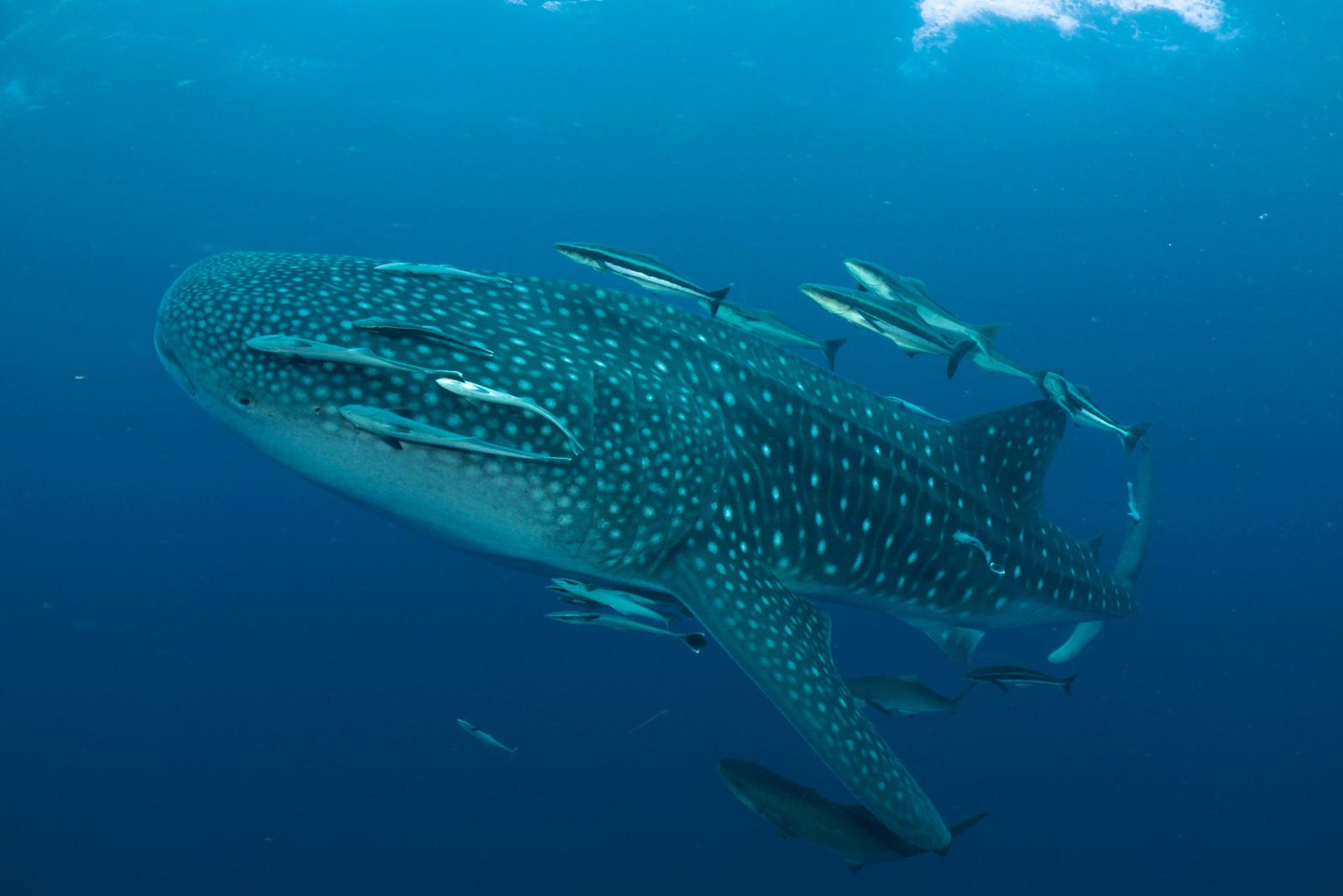
Sharks often get a bad rap for being ferocious predators, but there are several species that defy this stereotype.
These gentle giants of the ocean are more likely to nibble on plankton than you, making them fascinating creatures worthy of admiration rather than fear.
Let’s meet shark species that might just change your mind about these misunderstood sea dwellers.
1. Whale Shark
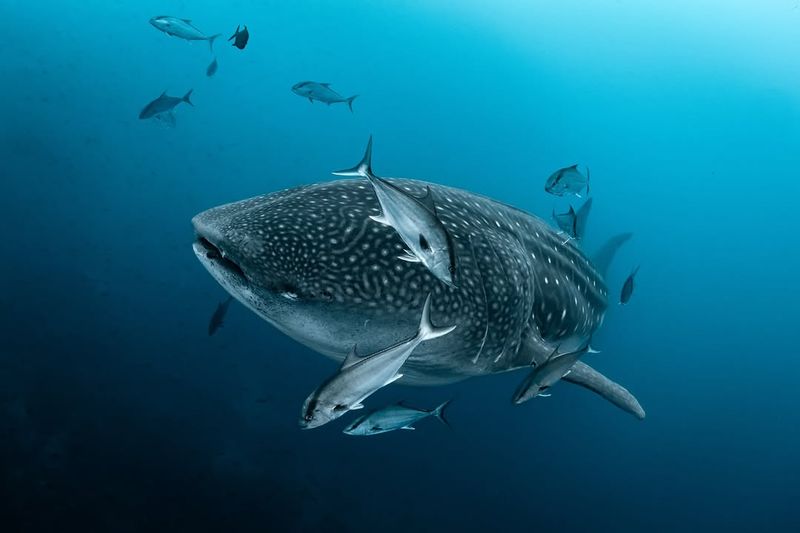
The whale shark is the largest fish in the sea, yet it is known for its gentle nature. Despite its size, it poses no threat to humans, as it feeds primarily on plankton and small fish. This docile giant glides through the ocean with a majestic calm, attracting divers and snorkelers who wish to swim alongside it.
Its distinctive spotted skin adds to its gentle, friendly appearance. Whale sharks are found in tropical and warm oceans, often near the surface. They’re filter feeders, which means they scoop up food by swimming with their mouths open.
This peaceful feeding method is a stark contrast to the predatory image often associated with sharks. Whale sharks are a testament to the fact that bigger isn’t always scarier. They symbolize the gentle side of the ocean and invite us to appreciate the diversity of marine life.
2. Basking Shark
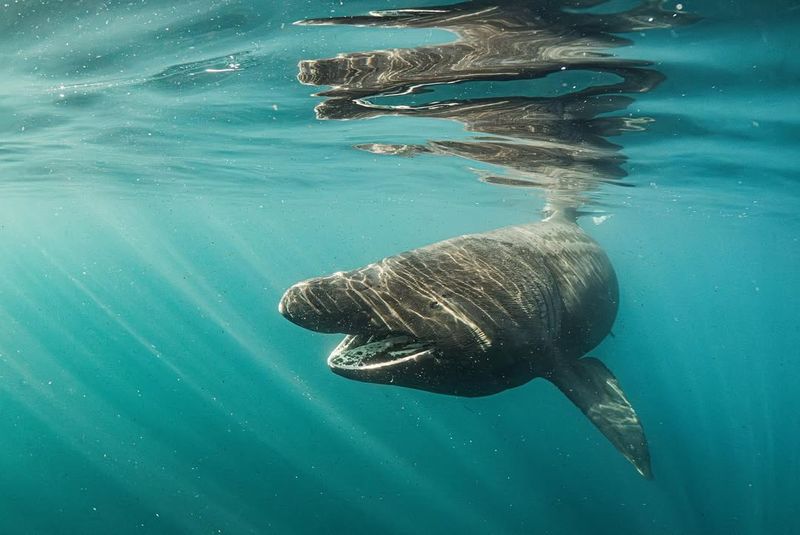
Second only to the whale shark in size, the basking shark is another gentle giant of the sea. It cruises through cold and temperate oceans with its mouth wide open, filtering massive quantities of plankton. Despite its intimidating size and gaping mouth, it is harmless to humans. Basking sharks can often be seen near the surface, basking in the sun, which is how they got their name.
These sharks travel in small groups or alone, moving slowly and deliberately through the water. Their skin has a rugged texture, but their demeanor is anything but. Watching a basking shark glide through the water is both mesmerizing and calming.
They’re a reminder that appearances can be deceiving, and that not all sharks are fierce predators. The basking shark’s serene presence is a gentle invitation to explore the wonders of the ocean world.
3. Nurse Shark
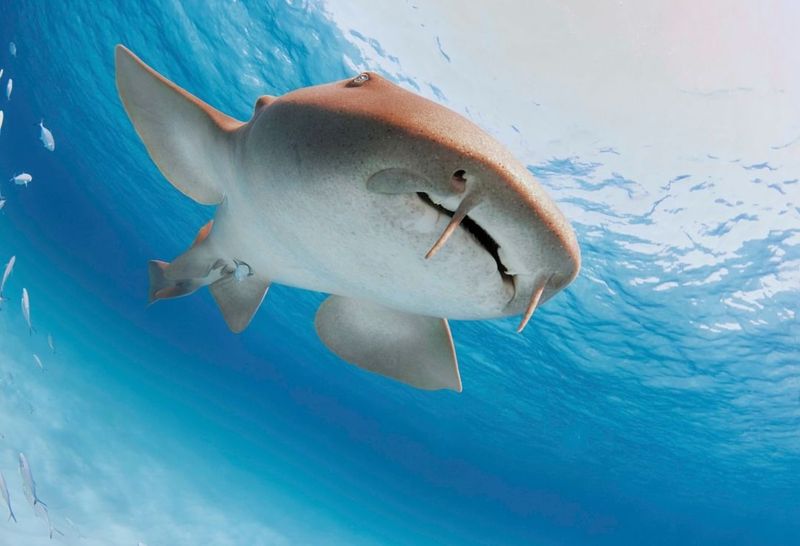
Despite their sluggish reputation, nurse sharks can be quite active at night, hunting for small fish and crustaceans. Their mouth is set in a unique way that gives them a perpetually pouty expression, adding to their charm. Unlike more aggressive species, nurse sharks are generally unbothered by human presence, making them ideal subjects for underwater photography.
They inhabit warm, shallow waters in the Atlantic and Eastern Pacific Oceans. Nurse sharks have a special way of breathing that allows them to rest on the ocean floor for extended periods. They use their strong jaws to crush shellfish and corals, showcasing their unique feeding habits.
Spending time with a nurse shark is like hanging out with an old friend who’s always happy to see you.
4. Leopard Shark
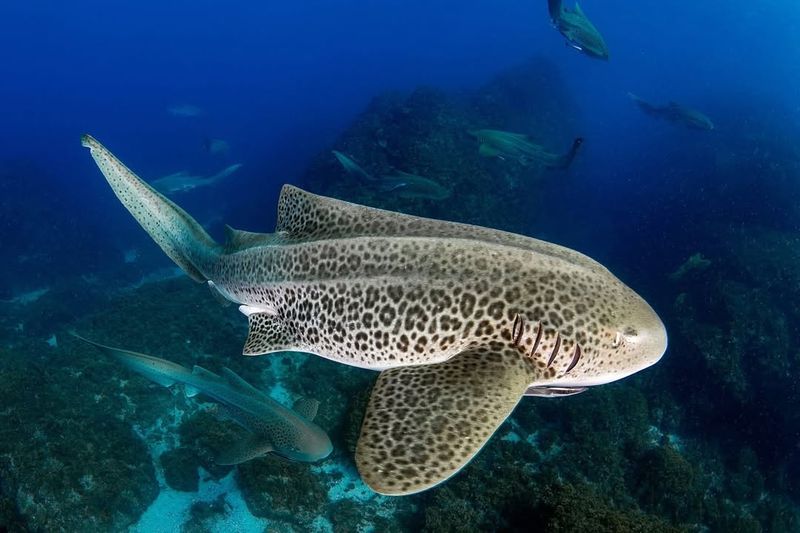
Leopard sharks are as elegant as they are gentle, easily recognizable by their striking pattern of spots. They inhabit the coastal waters of the Pacific Ocean, often found cruising over sandy bottoms. These sharks pose no threat to humans and are renowned for their calm demeanor. Leopard sharks often travel in schools, creating a beautiful spectacle for those lucky enough to witness it.
Their diet consists mainly of crustaceans and mollusks, which they hunt along the ocean floor. The leopard shark’s social nature and graceful movements make them a captivating subject for marine enthusiasts and photographers alike. Unlike their feline namesakes, leopard sharks are approachable and non-aggressive.
Their presence is a reminder of the ocean’s intricate tapestry of life, where each creature plays a vital role. Observing a leopard shark in its natural habitat is a delightful experience, akin to watching a work of art come to life.
5. Zebra Shark
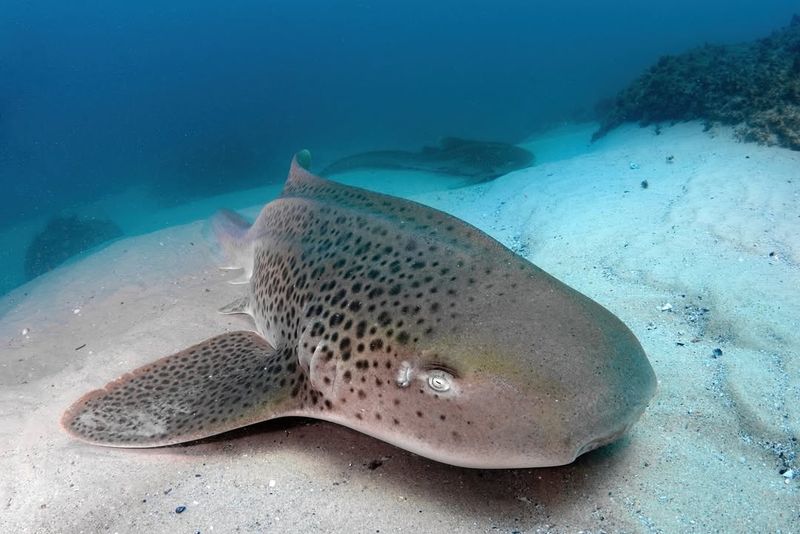
The zebra shark is a master of disguise, with a striped pattern reminiscent of its terrestrial namesake. Found in the warm waters of the Indo-Pacific, zebra sharks are nocturnal hunters. During the day, they rest on the ocean floor, often in caves or crevices.
Despite their fearsome appearance, they’re harmless to humans. Zebra sharks have elongated bodies and flexible fins, allowing them to twist and turn with ease. They’re known for their curious nature and often approach divers out of sheer interest. Their diet consists mainly of small fish and invertebrates.
Zebra sharks are solitary by nature, but their laid-back attitude makes them approachable. They’re an embodiment of the ocean’s mystery and allure, inviting us to look beyond the surface and appreciate the wonders beneath.
6. Port Jackson Shark
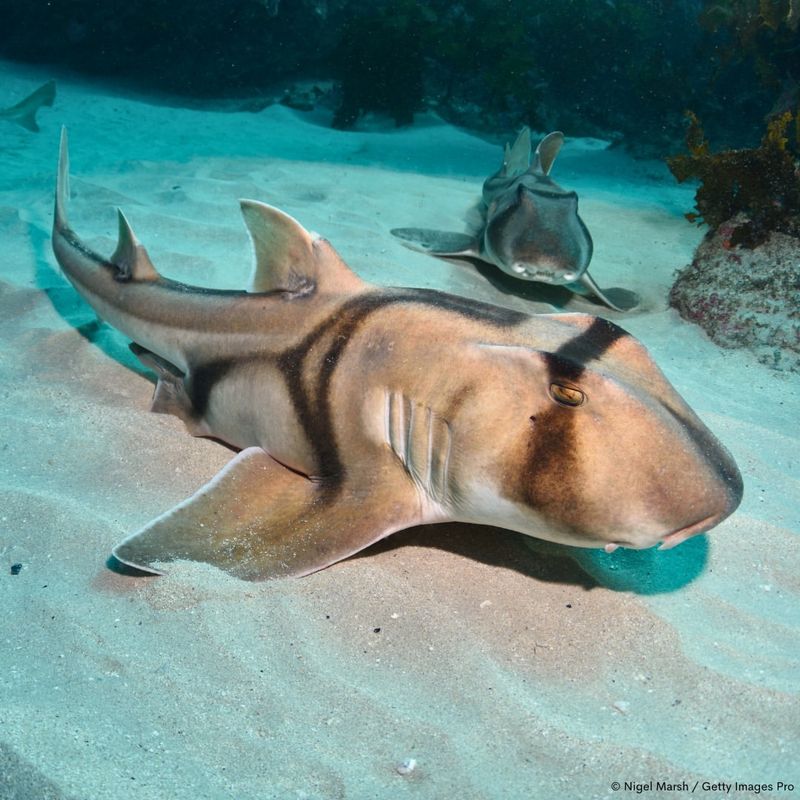
The Port Jackson shark is a unique species found in the coastal waters of southern Australia. Known for its distinctive, toothy grin and intricate markings on its head, it has an endearing appearance. These sharks are primarily nocturnal, spending their days resting in rocky crevices. Despite their small size and quirky looks, Port Jackson sharks are harmless to humans.
They feed on sea urchins, mollusks, and crustaceans, using their flat teeth to crush hard shells. Their spiral-shaped egg cases are a marvel of marine biology, often washed ashore where beach-goers can discover them.
The Port Jackson shark’s gentle nature and intriguing habits make it a favorite among divers and marine biologists. They’re an example of how diverse and fascinating the shark family can be. Observing a Port Jackson shark in its natural habitat is a whimsical experience, full of charm and wonder.
7. Wobbegong Shark
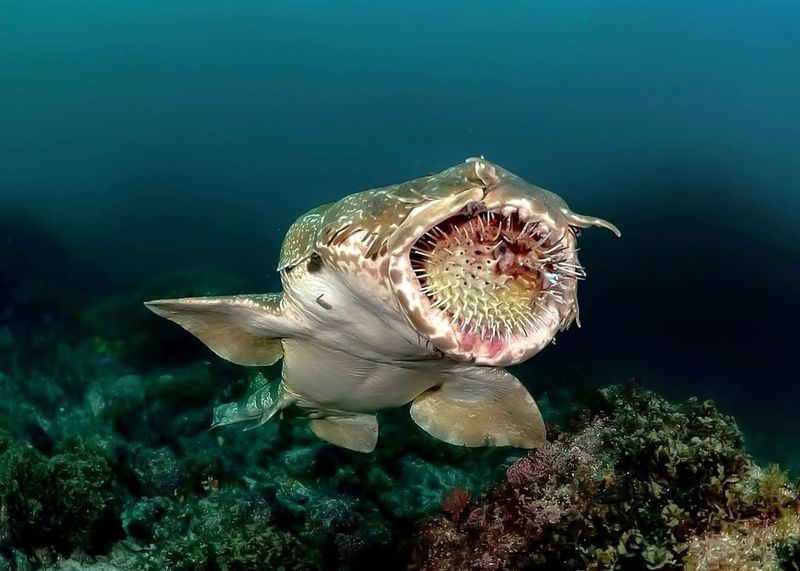
Found in the shallow waters of the Pacific and Indian Oceans, this shark blends seamlessly with the ocean floor. Despite its fierce appearance, the wobbegong is placid and non-aggressive towards humans. Their diet includes fish and invertebrates, which they catch using an ambush technique.
Wobbegongs are often found nestled in coral reefs, lying motionless as they wait for prey to come too close. Their unique ability to remain still for extended periods makes them fascinating to observe.
They’re an integral part of the marine ecosystem, maintaining the balance of life on the ocean floor. The wobbegong’s presence is a reminder of the ocean’s depth and complexity, where every creature plays a part.
8. Angel Shark
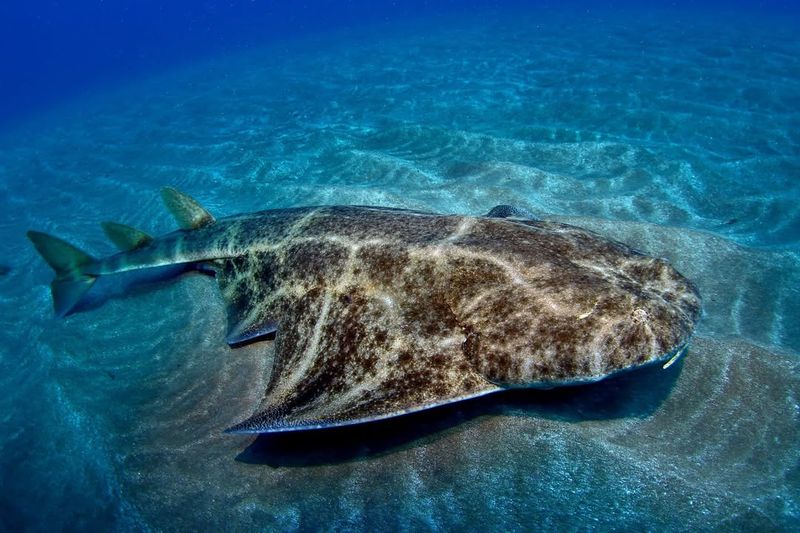
The angel shark is a flat, bottom-dwelling species that resembles a stingray more than a traditional shark. Found in the coastal waters of Europe and North Africa, they’re masters of disguise. These sharks bury themselves in the sand, waiting patiently for prey.
Angel sharks are non-aggressive and pose no threat to humans, preferring a life of quiet ambush. Their diet consists of small fish and invertebrates, which they capture with lightning-quick precision. The angel shark’s unique appearance and behavior make it a favorite among divers and underwater photographers.
Observing these creatures in their natural habitat is like watching a living artwork, perfectly adapted to its environment. Angel sharks remind us of the diversity and adaptability of life beneath the waves.
They’re a testament to the beauty and complexity of the ocean, inviting us to look deeper and appreciate its wonders.
9. Thresher Shark
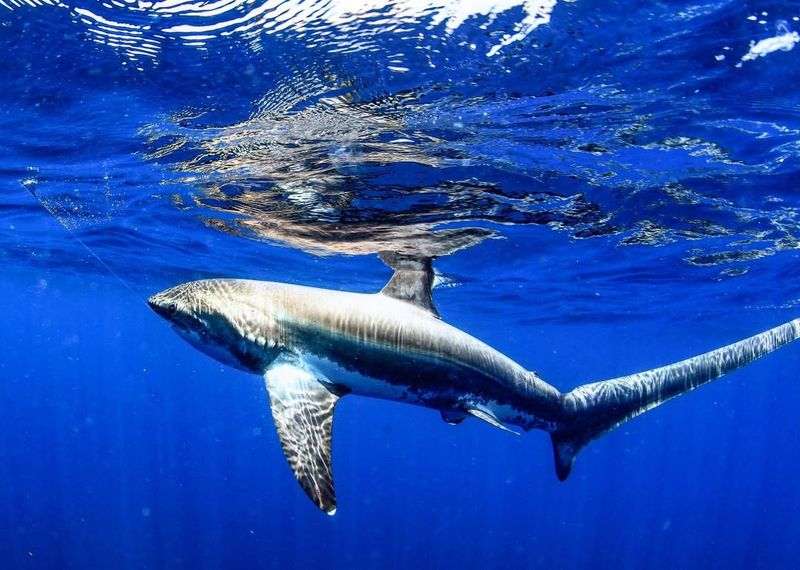
Found in temperate and tropical oceans worldwide, these sharks are known for their gentle nature. Thresher sharks use their long tails to stun schools of fish, making them unique hunters. Despite their hunting prowess, they’re harmless to humans and are often seen gliding gracefully through the water. Thresher sharks are solitary creatures, preferring the open ocean to coastal areas.
Their sleek, streamlined bodies are a marvel of evolution, perfectly adapted to their environment. Observing a thresher shark in action is a thrilling experience, showcasing the elegance and intelligence of these remarkable animals.
They’re a reminder of the ocean’s vastness and the incredible diversity of life it supports. The thresher shark’s gentle presence is a testament to the beauty and majesty of the marine world.
10. Blue Shark
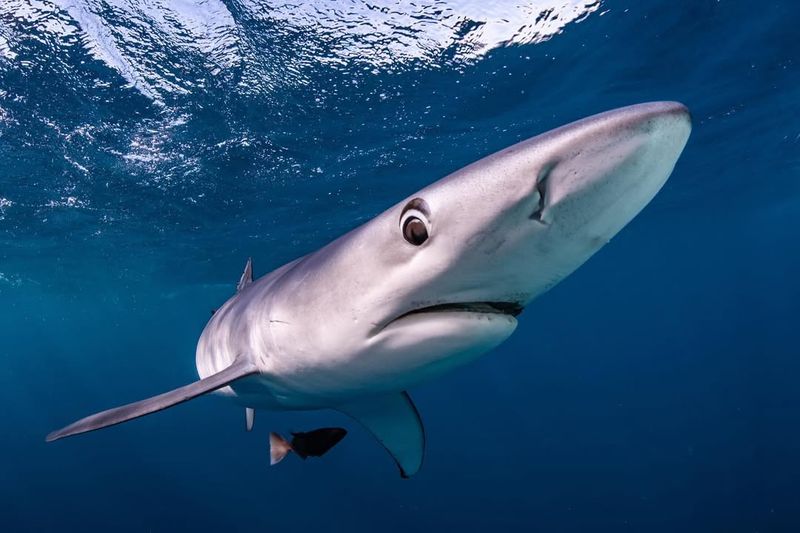
Blue sharks are known for their slender, elegant bodies and striking blue color. Found in the deep waters of the world’s oceans, they’re among the most widespread shark species. Despite their sleek appearance, blue sharks are gentle by nature, posing little threat to humans. They feed primarily on squid and small fish, using their agility and speed to catch prey.
Blue sharks are highly migratory, often traveling long distances in search of food and warmer waters. Their social nature leads them to form schools, making them a fascinating subject for marine researchers. The blue shark’s beauty and grace are a testament to the wonders of the ocean.
Observing these creatures in their natural habitat is a mesmerizing experience, full of elegance and charm. They’re a reminder of the ocean’s mystery and the delicate balance of life it sustains. Blue sharks invite us to appreciate the vastness and beauty of the marine world.
11. Goblin Shark
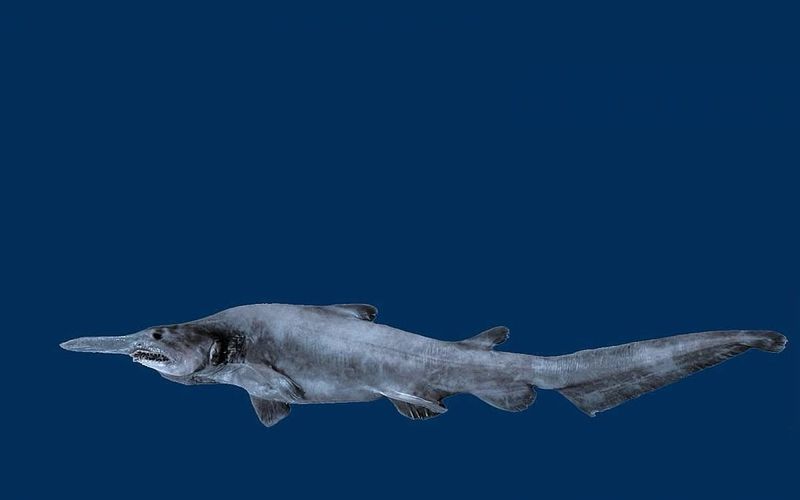
The goblin shark is a rare and elusive species, often found in the deep sea. With its long, pointed snout and pinkish hue, it’s one of the most unusual-looking sharks in the ocean. Despite its fearsome appearance, the goblin shark is gentle and poses no threat to humans.
Its diet consists of fish and squid, which it catches using its extendable jaws. Goblin sharks are solitary creatures, rarely seen by humans due to their deep-sea habitat. Their unique morphology and behavior make them a subject of fascination for marine biologists.
Observing a goblin shark is like encountering a living fossil, a glimpse into the ancient past of the ocean. They’re a reminder of the ocean’s unexplored depths and the mysteries that lie beneath.
12. Spotted Wobbegong
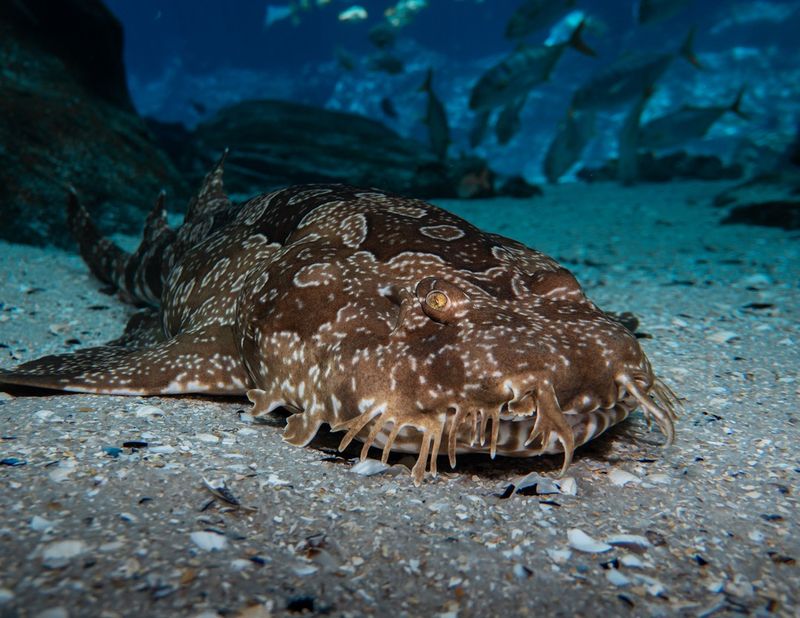
The spotted wobbegong is a bottom-dwelling shark found in the coastal waters of Australia and Indonesia. Its distinctive spotted pattern provides excellent camouflage, allowing it to blend seamlessly with the coral reefs. Despite its name, the spotted wobbegong is non-aggressive and poses little threat to humans.
These sharks feed on small fish and invertebrates, using an ambush technique to capture their prey. Spotted wobbegongs are often found resting during the day, becoming more active at night. Observing a spotted wobbegong is like discovering a hidden masterpiece, full of detail and beauty.
They’re a reminder of the ocean’s complexity and the delicate balance of life it supports. The spotted wobbegong’s presence is an invitation to explore and appreciate the wonders of the marine world.
13. Horn Shark
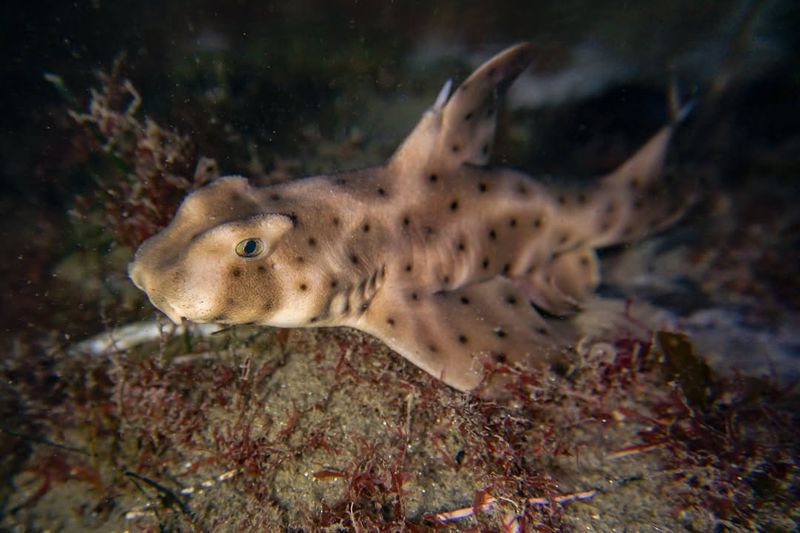
The horn shark is a small, nocturnal species found in the coastal waters of the Pacific Ocean. Known for its blunt head and horn-like ridges above its eyes, it has a quirky appearance. These sharks spend their days hiding among rocks and crevices, emerging at night to feed on sea urchins and mollusks.
Despite their tough exterior, horn sharks are gentle and pose no threat to humans. Their slow movements and unique feeding habits make them a fascinating subject for marine enthusiasts.
Observing a horn shark in its natural habitat is like watching a living relic, perfectly adapted to its environment. They’re a testament to the ocean’s diversity and the unique adaptations of its inhabitants.
14. Greenland Shark
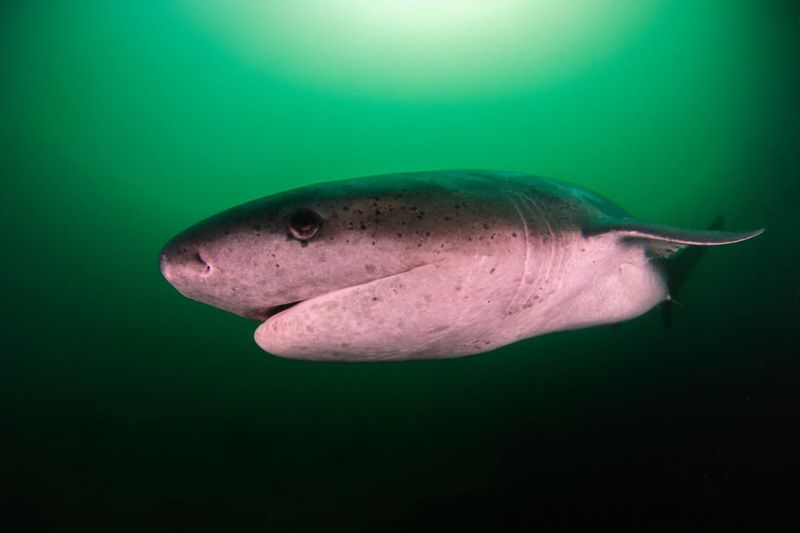
The Greenland shark is one of the longest-living vertebrates on the planet, with some individuals estimated to be over 400 years old.
Found in the cold waters of the North Atlantic and Arctic Oceans, these sharks are known for their slow movements and docile nature. Despite their massive size, Greenland sharks pose no threat to humans. They feed on a variety of prey, including fish and carrion, often scavenging for food.
The Greenland shark’s longevity and unique adaptations make it a subject of fascination for scientists. Observing these ancient creatures is like stepping back in time, offering a glimpse into the ocean’s past. They’re a reminder of the resilience and adaptability of life in the harshest environments.
15. Bluntnose Sixgill Shark
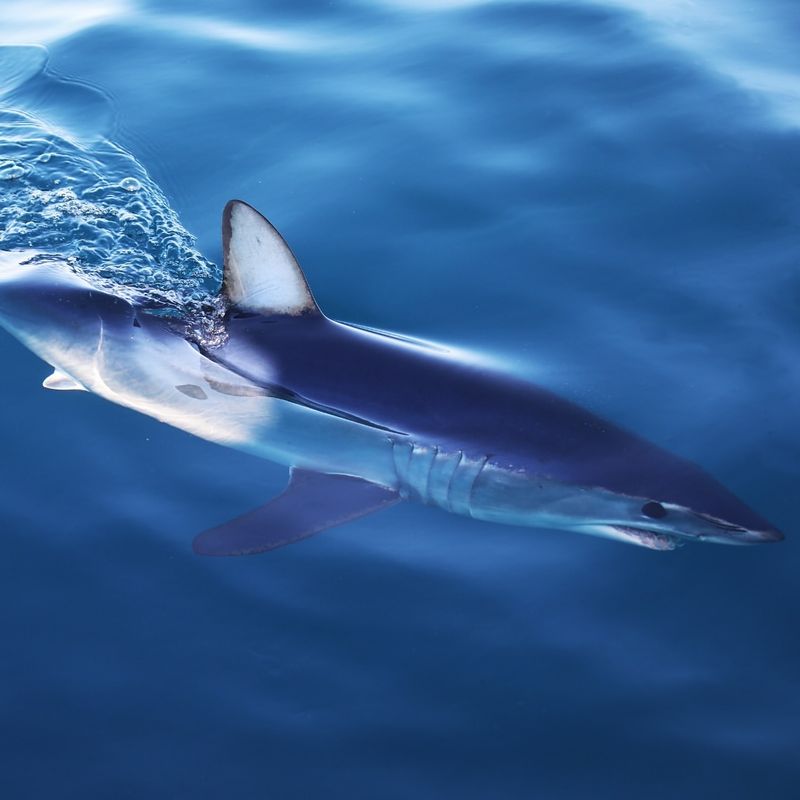
Found in tropical and temperate waters worldwide, these sharks are elusive and rarely seen by humans. Despite their size and formidable appearance, bluntnose sixgills are gentle and pose no threat to humans. They feed on a variety of prey, including fish and invertebrates, using their keen sense of smell to locate food.
The bluntnose sixgill’s unique physiology and behavior make it a subject of intrigue for marine biologists. Observing one in its natural habitat is a rare and exciting experience, offering insights into the ancient lineage of sharks.
They’re a reminder of the ocean’s vastness and the diversity of life it harbors. The bluntnose sixgill’s presence is an invitation to explore the mysteries of the deep, uncovering the secrets of a world few have seen.






